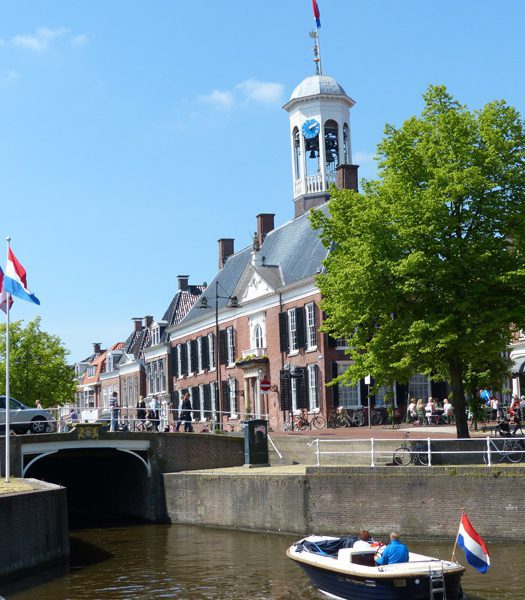City no. 11: Dokkum – Pilgrimage site
Dokkum is often jokingly referred to as ‘moordstad’; in Dutch this means both murder city and a city to die for. The latter because Dokkum is a friendly fortified town with many distinctive shops, restaurants, hotels, bed-and-breakfasts and terraces on the waterside and in the town centre. However, the northernmost of the Eleven Cities (city privileges awarded in 1298) is also known as the place where the missionary Boniface was murdered in 754. As a result, Dokkum has become a pilgrimage site for thousands of pilgrims and others who visit the source at the Bonifatiuskapel hoping to be cured by its healing powers. Also, all sorts of beverages, such as locally brewed beer (two of the breweries double as tasting rooms), and dishes carry the monk Boniface’s name.
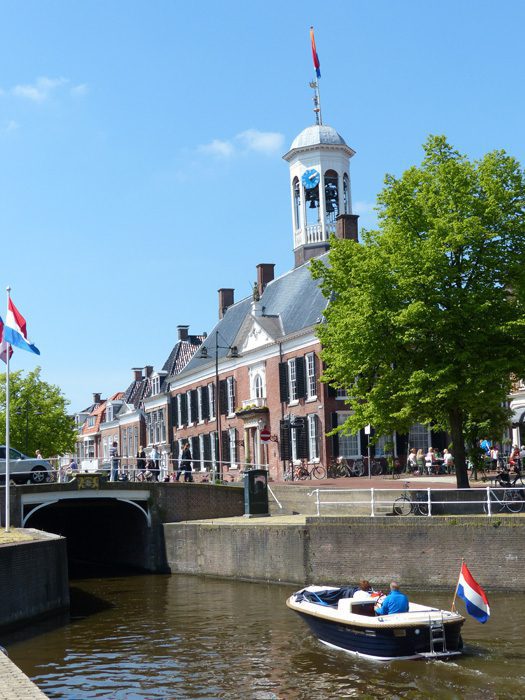
Dokkum
Boniface, born around the year 673 in Crediton in England as Wynfrith, was sent on a missionary expedition to the northern coast of Friesland by the king of the Frankish Empire, together with a small army of 52. This in order to convert the local population, most of whom were heathens. The Roman Catholic mission, which had already begun in 716 in Wijk bij Duurstede, in the middle of the Netherlands on the Nether Rhine, had a fatal outcome. In 754 the monk was murdered by the local population somewhere near the high Frisian terp, in those days still situated on the seaside.
To Fulda
After his death, Boniface’s body was taken to the Benedictine monastery in Fulda, in the German federal state of Hessen, a monastery he himself had founded 10 years earlier. The book he reportedly used to defend himself with from his Frisian attackers is also kept in Fulda. There are still traces of sword slashes on this so-called Codex Ragyndrudis.
Boniface lives
In Northeast Friesland St Boniface is still as alive as can be. On November 20, 2002, the district of Dongeradeel, of which Dokkum is the principal town, took the initiative to install a Friendship Committee, peopled by representatives from all walks of life. Friendly relations were forged on all levels with Fulda and Crediton. There are yearly exchange programmes. In 1934 a Bonifatiuskapel (Boniface Chapel) was erected, as well as a park for processions and the fourteen stations of the cross. The Bonifatiusbron, the source at the front, is believed by many to have healing powers. The pilgrimage church, set up as a Roman amphitheatre, seats 1,600. The altar and the seats are sheltered. In between, there is an uncovered so-called light garden, allowing visitors to experience a connection with nature. At the top, alongside the seats in the semi-circle, there is a procession walkway depicting the story of Boniface. And in Dokkum Museum a permanent exhibition is dedicated to Boniface.
Extraordinary surroundings
Unique examples of art, culture and nature grace the area surrounding Dokkum: palatial residences of the landed gentry, meadows bordered by long rows of trees to the south of the town, romantic villages built on terps in the northern clay region, National Park Lauwersmeer, UNESCO World Heritage site the Waddenzee, churches and ruins of monasteries dating back to the Middle Ages and more than twenty quite distinctive museums. In and around the Lauwersmeer area and along the coastal line of the Waddenzee, silence, clean air, space and true darkness at night are striking elements. Northeast Friesland is an excellent place to slow down your pace.
Museum Dokkum
The middle of Dokkum’s historical center is the home of Museum het Admiraliteitshuis, the Admiralty House. This museum occupies several historical buildings, including the 17th century seat of the Admiralty (similar to today’s navy) of Friesland and Groningen, established in 1618. Between 1596 and 1645 Dokkum housed one of the Netherlands’ five admiralty colleges. The principal tasks of the Admiralty were the protection of commercial vessels and waging warfare at sea. The Admiralty was relocated in Harlingen in 1645, after the estuary silted up.
In 1963 the museum set up business in the Admiralty House, which still features its beautiful original Renaissance decorations. Next to the museum is a lovely courtyard where the monumental entrance of the old Admiralty building can be admired. The museum’s permanent collection includes old archaeological excavations, old utensils, folk art, paintings, and Frisian pottery. There is an extensive collection of Frisian silverwork, much of it wrought bij local craftsmen. The museum also houses an interesting textile collection, featuring Frisian costumes, caps and embroidered samplers.
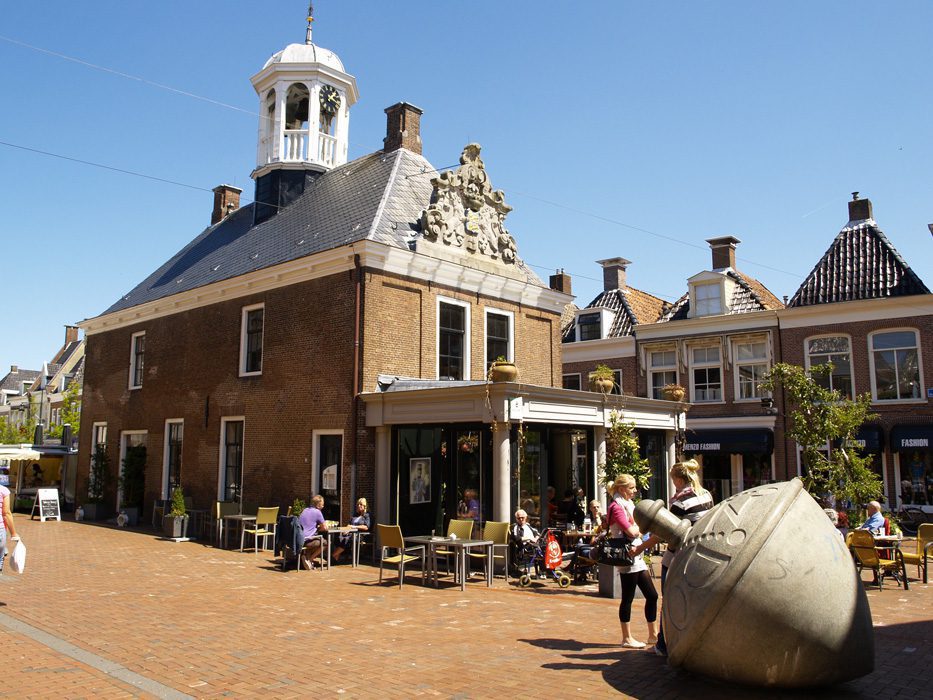
Dokkum
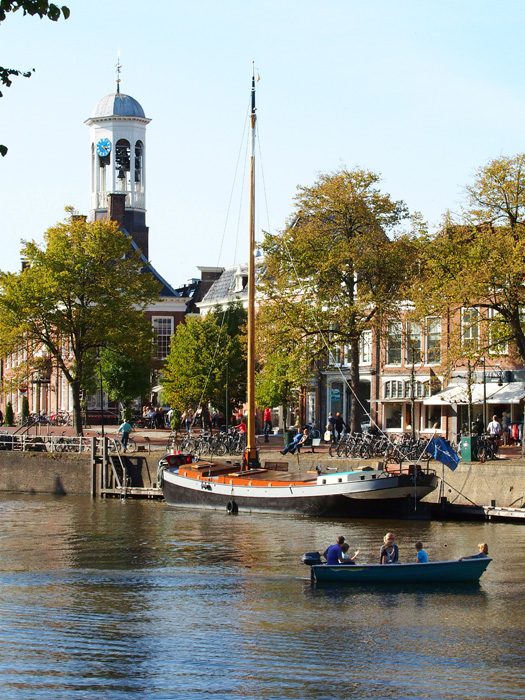
Dokkum
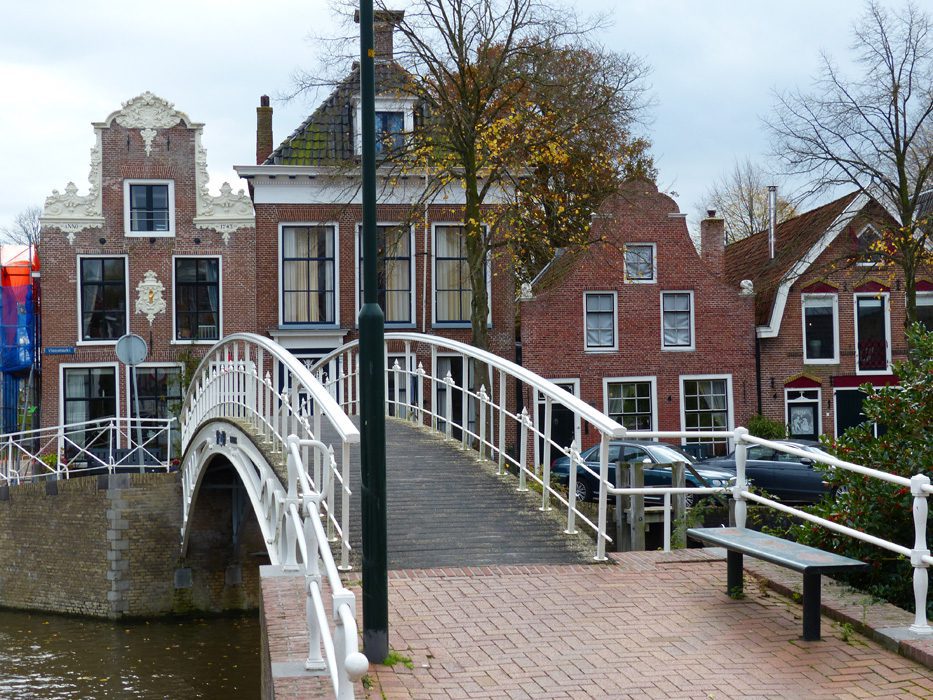
Dokkum
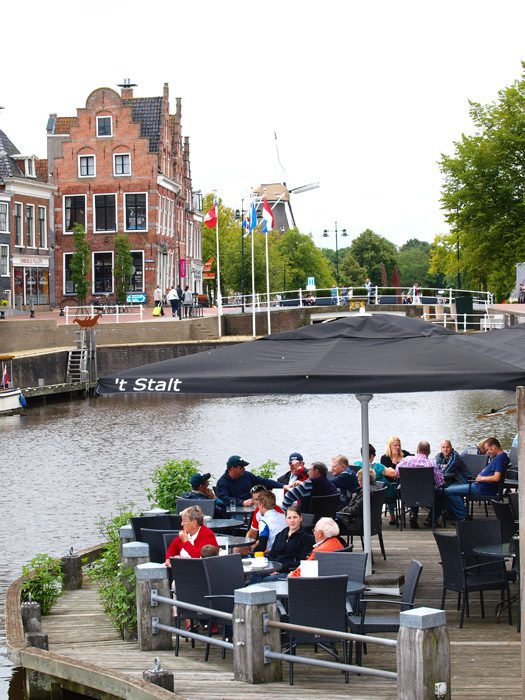
Restaurant ‘t Stalt – Dokkum
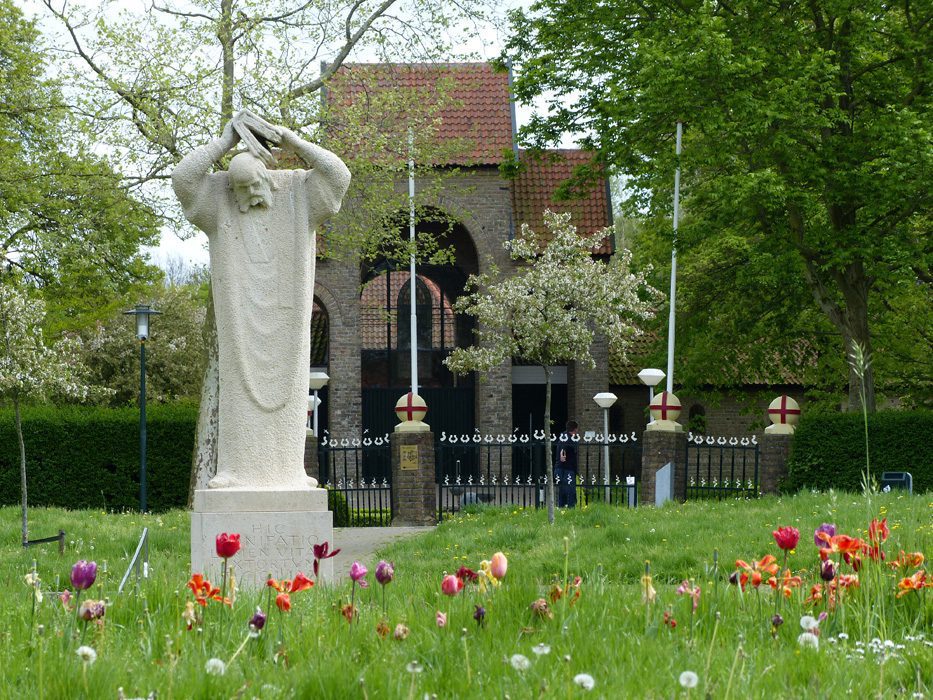
Bonifatius – Dokkum
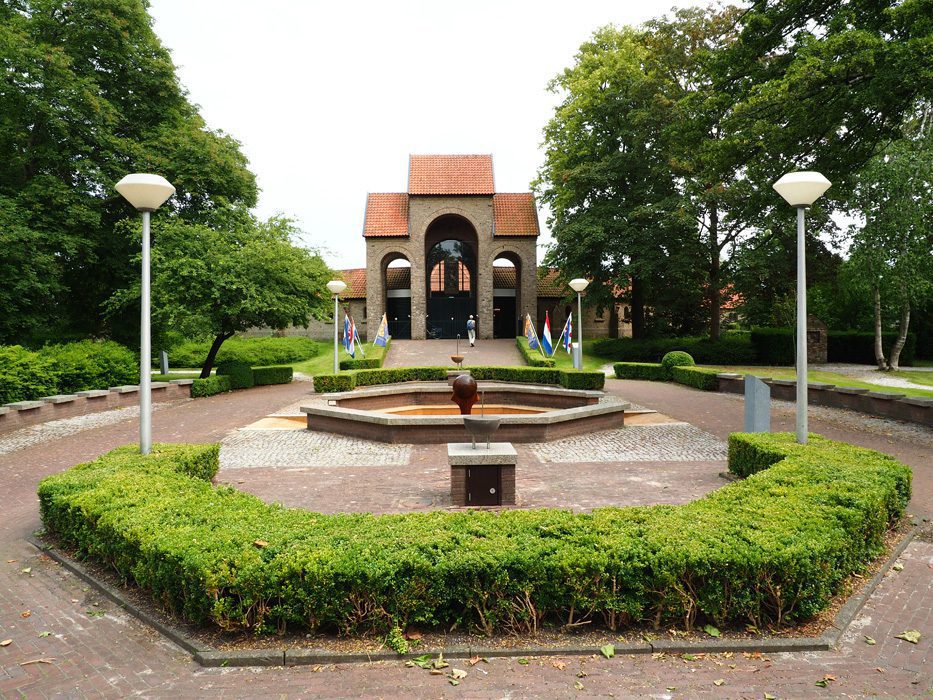
Bonifatiuskapel (1934) – Dokkum
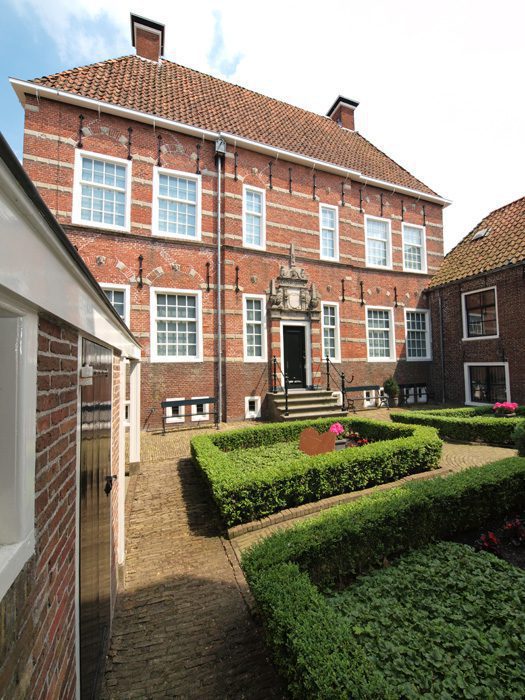
Museum Dokkum/Admiraliteitshuis
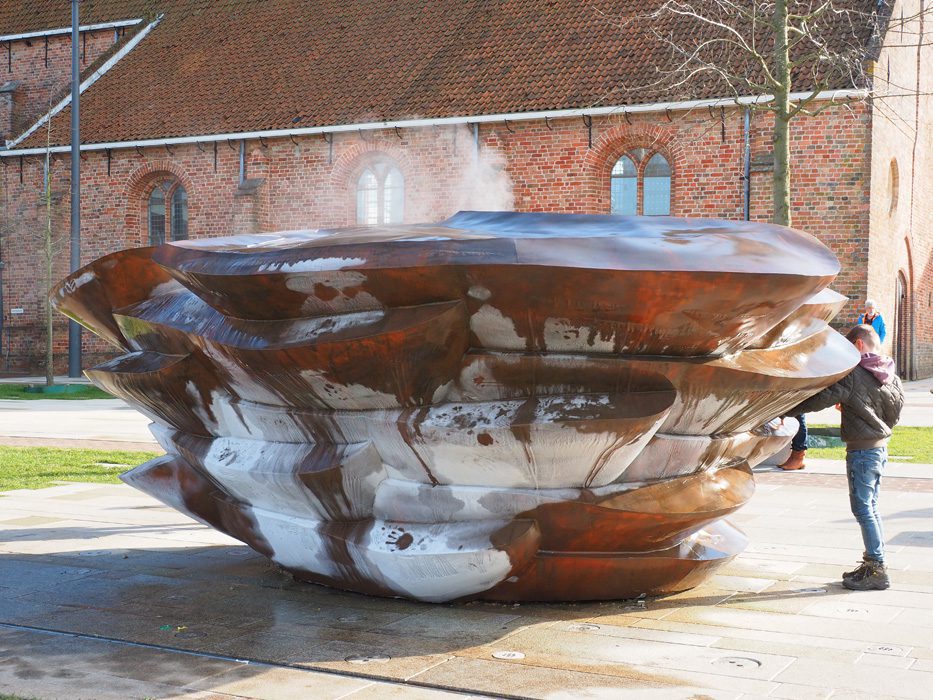
Fountain De IJsfontein – Dokkum
